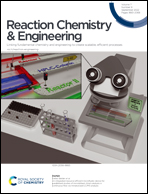CO2 adsorption on PEHA-functionalized geothermal silica waste: a kinetic study and quantum chemistry approach
Abstract
The use of solid waste and industrial by-products as alternatives to traditional raw materials to develop CO2 adsorbents has recently gained interest. In the present work, silica waste produced in a geothermal plant was impregnated with pentaethylenehexamine (PEHA) to prepare an amine-modified CO2 adsorbent. The SiO2–PEHA adsorbent was characterized, and the effects of temperature and initial CO2 concentration on the CO2 adsorption were assessed. Experimental CO2 adsorption results were fitted to pseudo-first-order (PFO), pseudo-second-order (PSO), Elovich, and intraparticle diffusion (IP diffusion) kinetic models. In addition, using the Gaussian 16 computational chemistry software package with the 6-311+(d,p) basis set coupled with the B3LYP hybrid density functional theory model, an adsorption mechanism between PEHA and CO2 was proposed. The results showed that the CO2 adsorption rate increases as the temperature and the initial CO2 concentration increase. This happens as the resistance to CO2 diffusion decreases until the mass transfer limitations dominate. The maximum CO2 adsorption capacity was 1.05 mmol CO2 per g material at 60 °C with 10 vol% CO2. The PSO model showed the best fit for the CO2 adsorption process on the SiO2–PEHA material. This suggests a chemical reaction between CO2 and PEHA molecules. Quantum chemical techniques allowed corroborating the formation of ammonium carbamate as a product of the exothermic reaction of CO2 adsorption on the SiO2–PEHA material.



 Please wait while we load your content...
Please wait while we load your content...